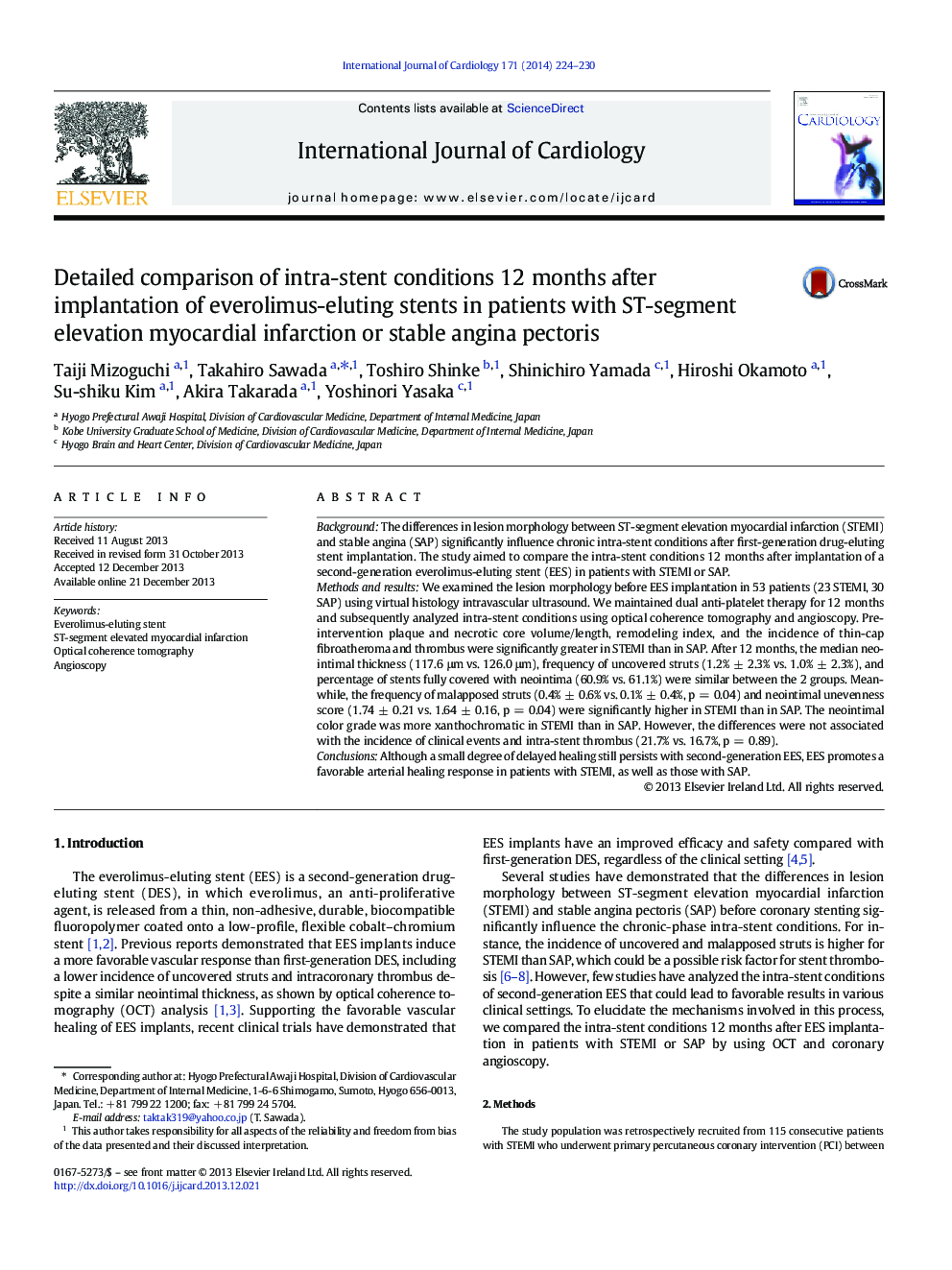| کد مقاله | کد نشریه | سال انتشار | مقاله انگلیسی | نسخه تمام متن |
|---|---|---|---|---|
| 5973244 | 1576194 | 2014 | 7 صفحه PDF | دانلود رایگان |

BackgroundThe differences in lesion morphology between ST-segment elevation myocardial infarction (STEMI) and stable angina (SAP) significantly influence chronic intra-stent conditions after first-generation drug-eluting stent implantation. The study aimed to compare the intra-stent conditions 12 months after implantation of a second-generation everolimus-eluting stent (EES) in patients with STEMI or SAP.Methods and resultsWe examined the lesion morphology before EES implantation in 53 patients (23 STEMI, 30 SAP) using virtual histology intravascular ultrasound. We maintained dual anti-platelet therapy for 12 months and subsequently analyzed intra-stent conditions using optical coherence tomography and angioscopy. Pre-intervention plaque and necrotic core volume/length, remodeling index, and the incidence of thin-cap fibroatheroma and thrombus were significantly greater in STEMI than in SAP. After 12 months, the median neointimal thickness (117.6 μm vs. 126.0 μm), frequency of uncovered struts (1.2% ± 2.3% vs. 1.0% ± 2.3%), and percentage of stents fully covered with neointima (60.9% vs. 61.1%) were similar between the 2 groups. Meanwhile, the frequency of malapposed struts (0.4% ± 0.6% vs. 0.1% ± 0.4%, p = 0.04) and neointimal unevenness score (1.74 ± 0.21 vs. 1.64 ± 0.16, p = 0.04) were significantly higher in STEMI than in SAP. The neointimal color grade was more xanthochromatic in STEMI than in SAP. However, the differences were not associated with the incidence of clinical events and intra-stent thrombus (21.7% vs. 16.7%, p = 0.89).ConclusionsAlthough a small degree of delayed healing still persists with second-generation EES, EES promotes a favorable arterial healing response in patients with STEMI, as well as those with SAP.
Journal: International Journal of Cardiology - Volume 171, Issue 2, 1 February 2014, Pages 224-230